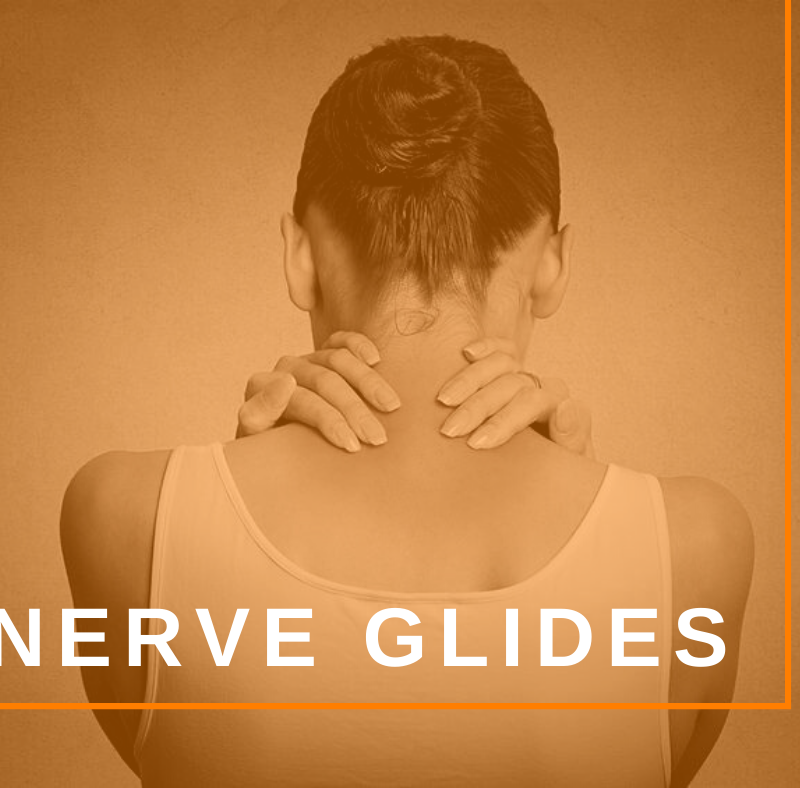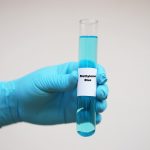
Often we instruct our personal training clients to help work out muscular tension and pain with static or even dynamic stretching. When this doesn’t resolve the issue, the problem may actually reside in restricted nerves, not muscles! Trainers can help clients overcome overuse injuries or even trauma, with some simple movements, similar to stretching but not quite the same, called nerve glides.
Dynamic Nerves
A little background science may help trainers understand the process of neural injury and its corresponding restoration. Explaining how nerves come to be restricted will be helpful to assist in teaching your clients about nerve glides.
Neurodynamics, a catch-all term referring to the integrated biomechanical, physiological, and morphological functions of the nervous system, has received a great deal of research attention over the past several years. A healthy human nervous system, capable of adapting to mechanical loads, engages in such processes as elongation, sliding, cross-sectional change, angulation, and compression.
Should such protective mechanisms fail, the nervous system opens itself up to a variety of unpleasant conditions any of which may cause aberrations in crucial functioning such as:
- neural edema (fluid swelling around the nerve)
- ischemia (blood flow restriction)
- fibrosis (scar tissue formation)
- hypoxia (oxygen restriction)
Utilizing the concept of neural mobilization such as nerve gliding when treating situations of adverse neurodynamics, physicians as well as physical therapists and personal trainers/coaches attempt to restore homeostasis –the delicate balance — between the movement of neural tissues relative to surrounding mechanical interfaces. Proper treatment reduces intrinsic pressure on the neural tissue, enabling optimum function, but it does take time.
How The Neural Response Initiates Movement
There is an incredibly complex network of interaction between different tissues (neural, muscle, connective tissue), the variety of stimuli (neural activity, mechanical factors, growth factors, nutrients, metabolic substances), and regulatory factors (genetic, epigenetic, metabolic signaling factors). Changes in one aspect of neural activity can quickly lead to adaptive changes in the rest of the network, and over time a new set value of homeostasis emerges.
When a nerve is injured, either through trauma, surgical procedures, or repetitive motion, it lacks the ability to glide normally through its surrounding sheath, typically producing sharp pain. A muscle contracture describes the temporary (or sometimes permanent) shortening of muscles, which can result in stiffness and rigidity when pathology is present. Changes in tissue homeostasis in the neuromuscular–tendon–connective tissue complex is at the heart of such contractures. According to Joe Gambino, DPT, CSCS, a New York City-based physical therapist, this also leads to a loss of mobility.
Three peripheral nerves succumb to this situation most often, but it can occur in any nerve: the ulnar and radial nerves (in the arms) and the sciatic nerve, which originates in the low back and travels down the leg into the foot.
Glide, Floss, Stretch
Nerve flossing (sometimes called nerve gliding or neural gliding) describes a type of gentle exercise that stretches irritated nerves, with the goal of improving range of motion and reducing pain. The effectiveness of such treatment improves greatly when combined with traditional physical therapy.
While similar in nature to stretching muscles, nerve glides differ in one key aspect: Patients and athletes commonly sustain a muscular stretch position for 30 seconds to one minute. Nerve glides, however, function best with a pulse as opposed to a static hold. A common regimen calls for 1-3 sets of 10 pulses each.
Some basic guidelines may help trainers attempting to utilize this process with clients:
- Nerve flossing shouldn’t produce pain. If the client starts to feel pain, stop the stretch immediately.
- Muscular tension should be minimized. Prompt the client to stay as relaxed as possible.
- Respiratory rhythm should proceed with long, deep breaths. Pay attention to be sure your client is holding his/her breath.
- Start slowly. Work up to a full set by first starting with few repetitions at a time, until the client’s body adjusts.
Nerve Glides for Sciatica
Neural gliding has demonstrated success in combating sciatic nerve pain, which can cause tingling, numbness, and pain anywhere from the low back down the through the leg. Below you will find some sample exercises to suggest to clients. Try these out yourself first, before attempting to assist and guide clients. As always, make sure your client consults with a medical professional if pain worsens or persists. If there is serious nerve damage, these exercises could potentially aggravate rather than help!
Knee-to-chest “marching” stretch
- Lie on the floor in “hook-lying” (on back, with knees bent and feet flat on floor) position with a flat cushion under the head if necessary.
- Hold one knee with both hands and pull it in toward chest with a brief 1-3 second hold.
- Return to starting position.
- Repeat with the other leg.
Perform three -10 sets of this sequence, alternating between left and right leg.
Hamstrings stretch
- Start seated with both feet flat on the floor.
- Straighten one knee while keeping the back straight, and simultaneously dorsiflexing the foot and tucking chin very slightly.
- Alternate between plantar- and dorsiflexion for up to 10 reps.
- Return to starting position relaxing head and foot.
- Repeat with the other leg.
*If discomfort is felt, eliminate the neck movement and flex only at the ankle.
Once again, proceed with three sets, alternating between left and right leg.
Mobilizing stretch
- Lie on your back with a flat cushion under your head in hook-lying position and chin tucked.
- Pull one leg in toward chest while supporting the back of the thigh with both hands.
- Slowly straighten the leg, feel the stretch, then return to starting position.
- Do the same with other leg.
Repeat three sets of this sequence, alternating between left and right leg.
Back extension
- Lie on your chest with elbows bent and palms flat on the floor.
- Push with your hands to arch the back. Keep hips on the floor and chin tucked. (Client might feel stretching in the abdominal muscles.)
- Hold for 5 seconds.
- Return to starting position.
Repeat sequence 8 – 10 times.
Upper Body Limb Limitations
Neural gliding has likewise shown great success in overcoming radial and ulnar nerve discomfort. You can find guidelines for some basic exercises listed below. Again, please try these out yourself before attempting to assist clients.
To facilitate gliding of the ulnar nerve, one side at a time:
- Touch index finger to thumb while holding the other three fingers in the air (as if making the “okay” sign).
- Bring hand towards face, leading with the pinky finger, as if placing it over the eye (like making a “raccoon mask”). Do not to push too hard
- Reverse the movement after a brief hold
Repeat sequence 8-10 times.
To effectively glide the radial nerve:
- Place arm straight out to the side at a ninety-degree angle to the body with the palm facing toward the ground.
- Keeping fingers straight, bend up and down at the wrist.
- Achieving a deeper stretch by bending the head to the opposite side (ear to shoulder).
- If this movement fails to elicit a sufficient stretch, reposition the arm slightly behind body and repeat the process.
Perform up to 10 movements on each arm.
A physiological understanding of the interaction between neural, mechanical, and metabolic factors helps to unravel the challenges of muscle contractures and different experiences of pain. As our knowledge base improves, so can our ability to help clients through the proper neurodynamics of nerve gliding.
References:
www.ncbi.nlm.nih.gov/pmc/articles/PMC2696782/
www.ncbi.nlm.nih.gov/books/NBK10965/
www.ncbi.nlm.nih.gov/pmc/articles/PMC5033663/
www.sciencedaily.com/releases/2019/05/190522120551.htm
physoc.onlinelibrary.wiley.com/doi/full/10.1113/JP272767
en.m.wikipedia.org/wiki/Inhibitory_postsynaptic_potential
www.ncbi.nlm.nih.gov/pmc/articles/PMC4059017/
www.painscience.com/articles/stiffness-and-rom.php
www.healthline.com/health/nerve-flossing
furthermore.equinox.com/articles/2018/07/nerve-gliding
contrologypt.com/purpose-of-nerve-glides/
www.ncbi.nlm.nih.gov/pmc/articles/PMC2565076/
www.askdoctorjo.com/content/neural-glides-ulnar-median-radial-nerves







